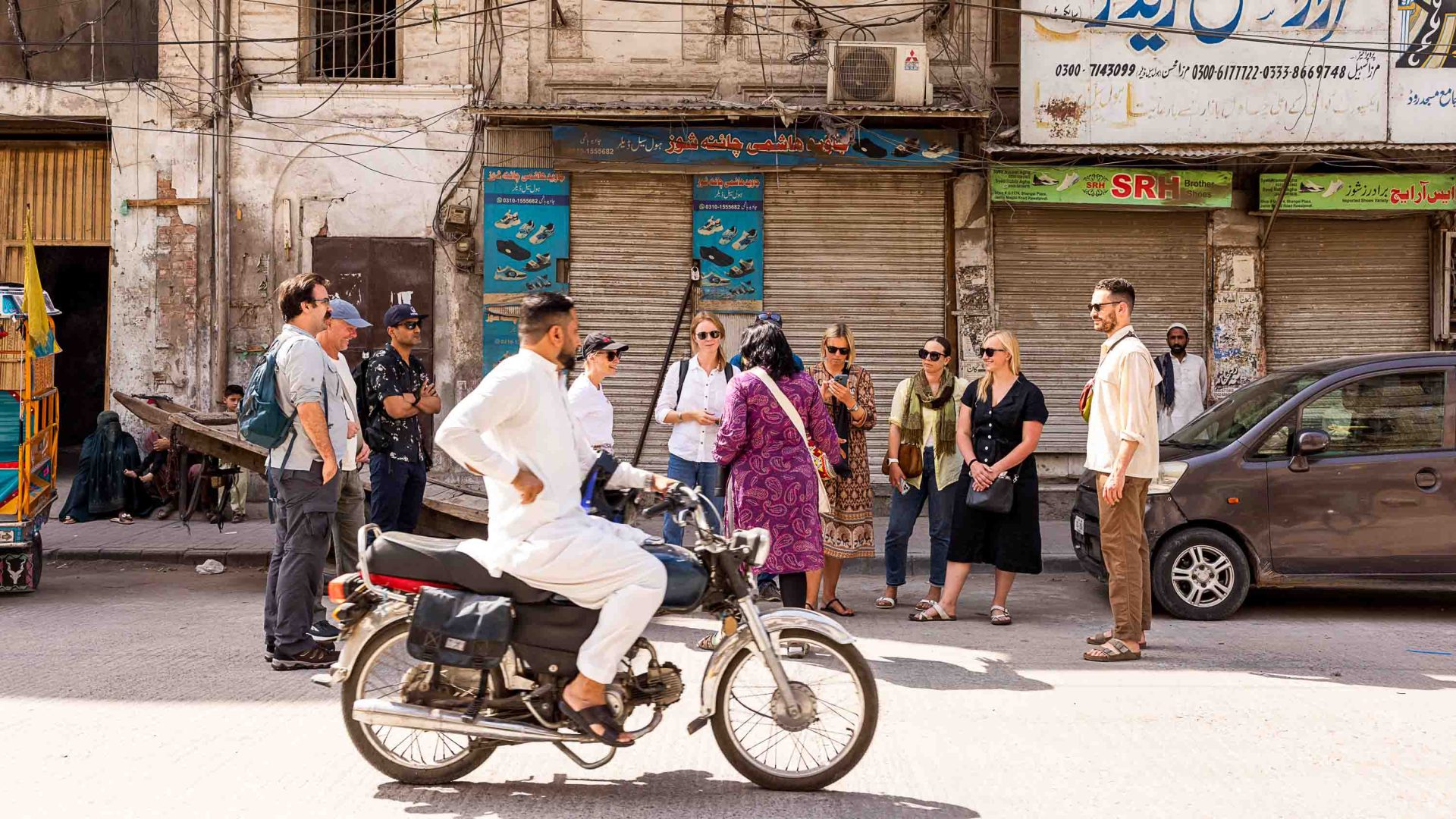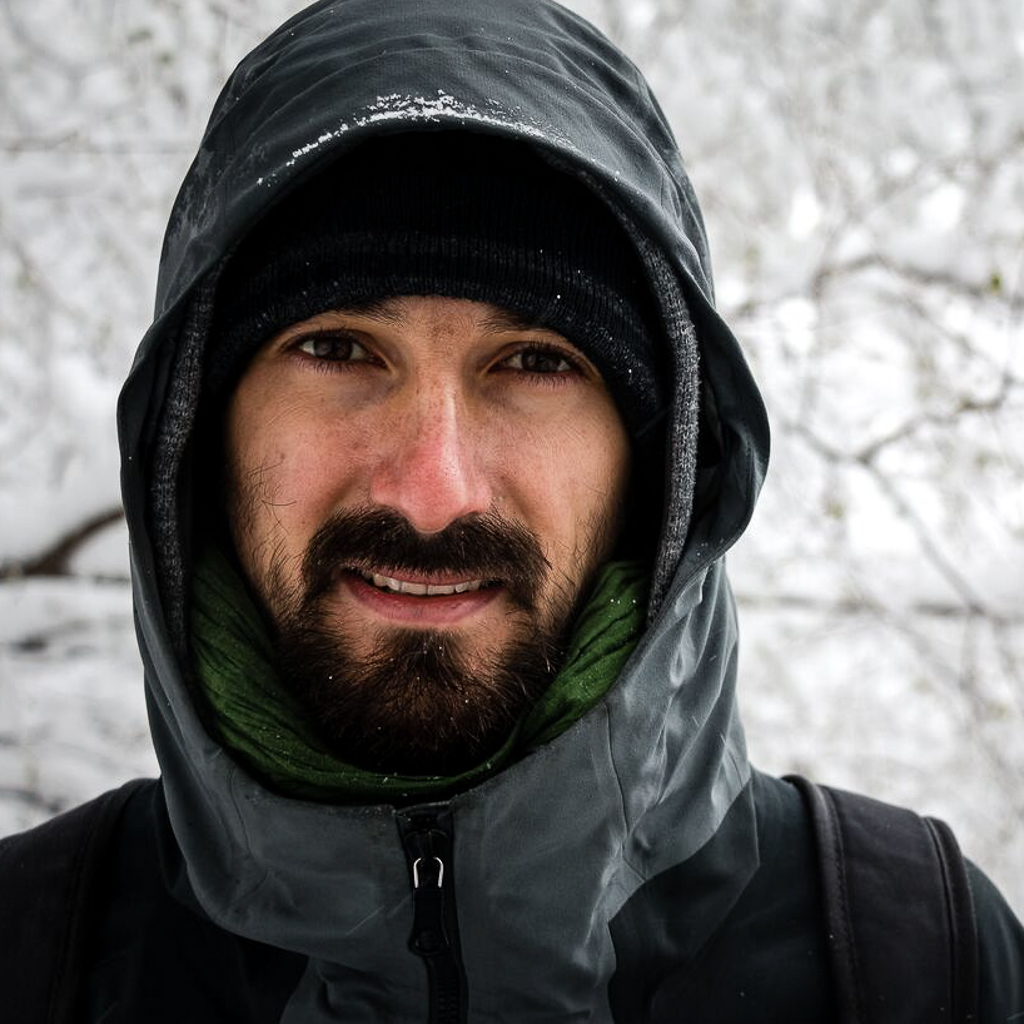
Sarah Reid takes the temperature of one of the world’s most exciting adventure travel destinations on a brand-new trekking expedition in Pakistan.


Sarah Reid takes the temperature of one of the world’s most exciting adventure travel destinations on a brand-new trekking expedition in Pakistan.
“There is another ‘wow’ moment up here,” says our guide Muneer Alam with a flash of his huge, seemingly permanent smile. Sure enough, as I reach the top of a punishing hill, a panorama of soaring snow-capped peaks and hulking glaciers unfurls before me. This dramatic landscape has been described as the Yosemite of Pakistan. But there’s nowhere else on the planet quite like this.
I’m hiking in the Karakoram Mountains, a high-altitude wilderness largely contained within northeastern Pakistan’s unofficial province of Gilgit-Baltistan. Also home to the westernmost peaks of the Himalayas, Gilgit-Baltistan lays claim five of the world’s 14 ‘eight thousanders’ including the infamous K2, more than 7,000 glaciers, and some of the warmest hospitality I’ve encountered anywhere. Yet only 11,000 foreign tourists visited the region in 2023.
Shaped by colonial rule, Pakistan has a tumultuous history punctuated by a number of terrorist attacks and incidents of sectarian violence which have largely kept mainstream travelers at bay. The ‘do not travel warnings’ that apply to large swaths of the country—including border areas with Afghanistan, Iran and India— don’t do it any favors either. But the introduction of a more relaxed visa policy in 2020 and the launch of its first-ever tourism board last year are signals to the world that Pakistan is open for visitors.
Having long wondered how hiking in the Karakoram Mountains shapes up against the famous trails of Nepal and Bhutan, I jumped at the chance to join one of Intrepid’s first Trek Pakistan’s Karakoram Mountains tours in June 2024.
My adventure begins in Islamabad, Pakistan’s young and relatively relaxed capital. While I attract countless curious stares and requests for selfies (from both men and women) while I’m out visiting mosques and museums, I never feel unsafe. Islamabad’s food scene is as diverse as you’d expect of any capital city, and I get a taste for upscale Pakistani street food at buzzing cafe Khoka Khola (I’m still dreaming of the spicy-sweet papri chaat), and discover a deep love for mantu (Afghan dumplings filled with meat, spices and onion) at New Kabul Restaurant, an Islamabad institution.
“If we want to preserve these landscapes, [tourism] has to benefit the communities.”
- Umer Latif
A one-hour flight whisks our group from the baking-hot streets of Islamabad to the refreshingly cooler climes of Skardu in Gilgit-Baltistan, also known as ‘Little Tibet’ for its majority population of Balti people, a mostly Muslim ethnic group of Tibetan descent.
Most tourists to the region beeline for the particularly picturesque Hunza Valley (where our guide Muneer hails from), located on the legendary 1,300-kilometer-long Karakoram Highway, one of the world’s highest paved roads which cuts through the Karakoram mountains, or to the remote village of Askole, where the popular K2 Base Camp hike begins. But we pile into a convoy of four-wheel-drives bound instead for the Nangma Valley, an emerging trekking route in the Ghanche district, and the so-called ‘Yosemite of Pakistan’.
After hiking the Nangma Valley for the first time during the COVID-19 pandemic on the recommendation of a local, Pakistani business owner and hiking enthusiast Umer Latif couldn’t believe that there was no formal trekking tourism in this gorgeous, undeveloped valley. “There are so many other trails in Gilgit-Baltistan that locals didn’t think tourists would want to come here,” Umer tells me.
Inspired by the potential for untapped trekking tourism in the region, and the positive impacts it could bring to local communities such as Kanday (2,900 meters/9,514 feet altitude), the village at the gateway to the Nangma Valley, Umer founded adventure travel company Beyond the Valley. Committed to developing sustainable tourism in the region, Beyond the Valley is now Intrepid’s operating partner for Pakistan trekking tours.
It’s a four-hour hike from Kanday Village to our first campsite at Mingulo Broq (3,500meters/11,483 feet), about halfway up the Nangma Valley. It’s a steep but scenic journey, with candy-pink wild roses popping against the rocky landscape, and glacial streams tumbling down the valley. With its lush alpine meadow and grazing cows, Mingulo Broq is a stellar spot to pitch a tent. But it’s got nothing on our second campsite in a grassy clearing at the top of the valley (3950 meters/12,959 feet) encircled by jagged peaks and oozing glaciers. The vista is just as beautiful by night, when the celestial splendor of the Milky Way dances across the clear, cloudless sky.
Typically completed in three-to-four days, with an optional detour to Amin Brakk Base Camp (4,500 meters/14,764 feet), the Nangma Valley is a hit with our group. Our small army of cheerful local porters seem to enjoy it just as much as we do.
“My father was a porter on K2 and didn’t want me to become one because he knew how hard it was,” says 24-year-old Munir Kotakpa Kanday, an enthusiastic participant in the cricket matches that consume the afternoons of our trek. With financial pressures leaving him no other choice, Munir struggles to find the words to describe the joy it brings him to work on an ‘easy’ route close to home for the same (government mandated) pay. “It is bliss on a level I can’t explain,” he says.
“Tourism is the future of this region, and I want to be a role model for other women.”
- Noor un Nisa, Serena Shigar Fort Hotel
For trekking tourism to have a sustainable future in Kanday, the community must not be forgotten, Umer tells me. “If we want to preserve these landscapes, it has to benefit the communities,” he says. Kanday isn’t the only mountain community that is looking to low-impact tourism to diversify its reliance on agriculture. Among them is Yugo, where we break up the magnificent drive from Skardu to Kanday with a guided walk through the traditional village (still using a watermill to grind grain) and a feast of freshly harvested cherries and sweet white mulberries.
Similarly to Kanday, all of the locals we interact with in Yugo are men. While gender roles are slowly shifting in the region, it’s still uncommon to find women working beyond the fields. An exception is Noor un Nisa, one of three women currently employed by the Serena Shigar Fort, one of Gilgit-Baltistan’s finest historic hotels.
When Pakistani men see her behind the reception desk, she says, they typically speak to her in English, assuming she’s a foreigner. But Noor takes these challenges in her stride. “Tourism is the future of this region, and I want to be a role model for other women,” says the 25-year-old, who aspires to become the general manager of a hotel one day.
During our journey, we also catch up with Pakistani tourism trailblazer Aneeqa Ali, who overcame similar challenges to launch her female-led travel business, The Mad Hatters. Developed in partnership with Aneeqa, Intrepid’s Pakistan Women’s Expedition offers unique opportunities for female travelers to connect with local women in Islamabad and Gilgit-Baltistan.
As we trace the silver tresses of the Indus River back to Skardu following our Nangma Valley hike, I ponder how the future of tourism will pan out in Pakistan’s alpine playground. Between its limited tourism infrastructure and lack of alcohol (typically only served to non-Muslims in five-star hotels), I can’t picture backpackers arriving en masse anytime soon. The epic landscapes and warm hospitality intrepid travelers will find here, however, surely won’t remain a secret for long.
The writer traveled to Pakistan as a guest of Intrepid Travel.
***
Adventure.com strives to be a low-emissions travel publication. We are powered by, but editorially independent of, Intrepid Travel, the world’s largest travel B Corp, who help ensure Adventure.com maintains high standards of sustainability in our work and activities. You can visit our sustainability page or read our Contributor Impact Guidelines for more information.








Can't find what you're looking for? Try using these tags: